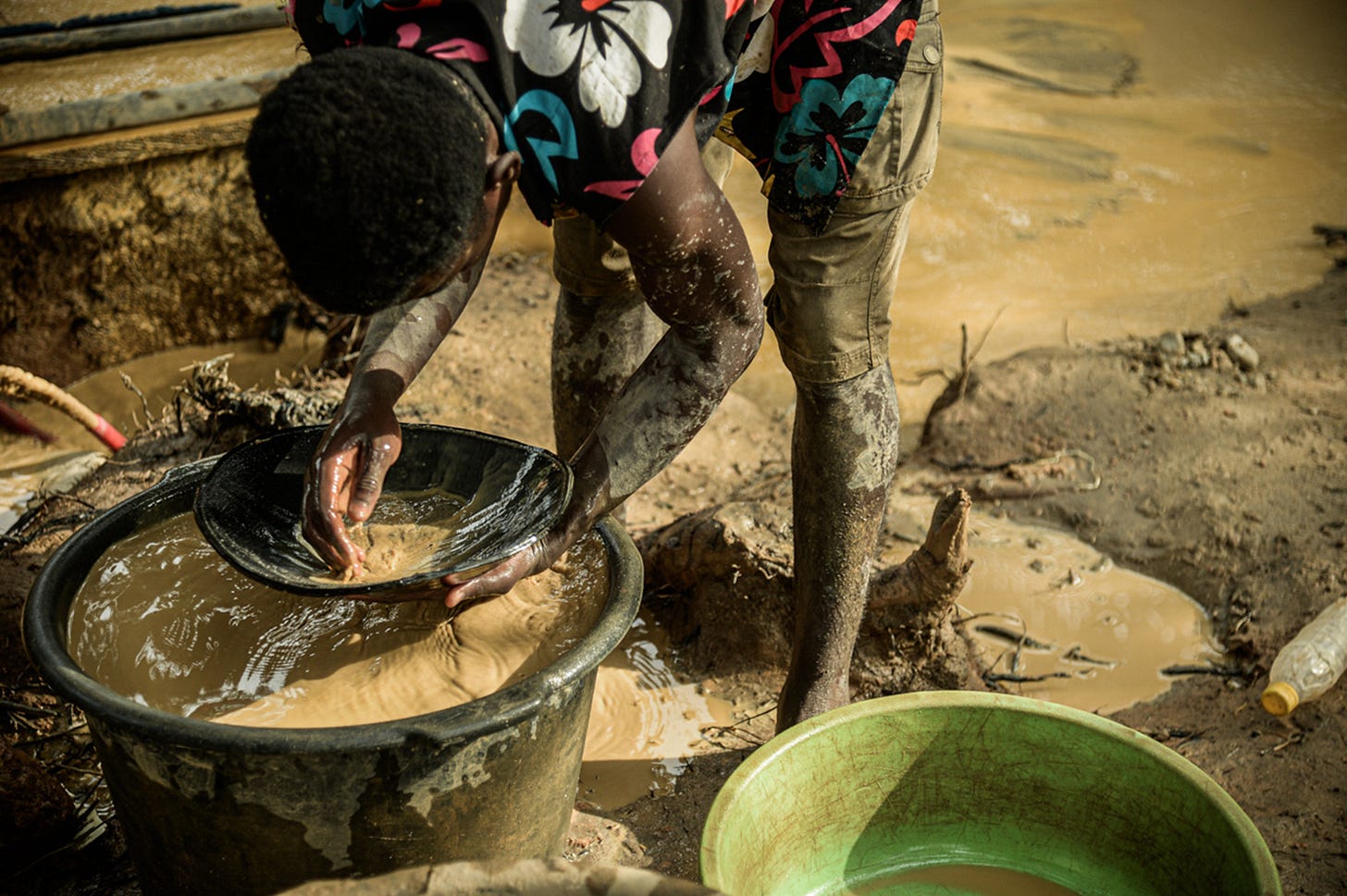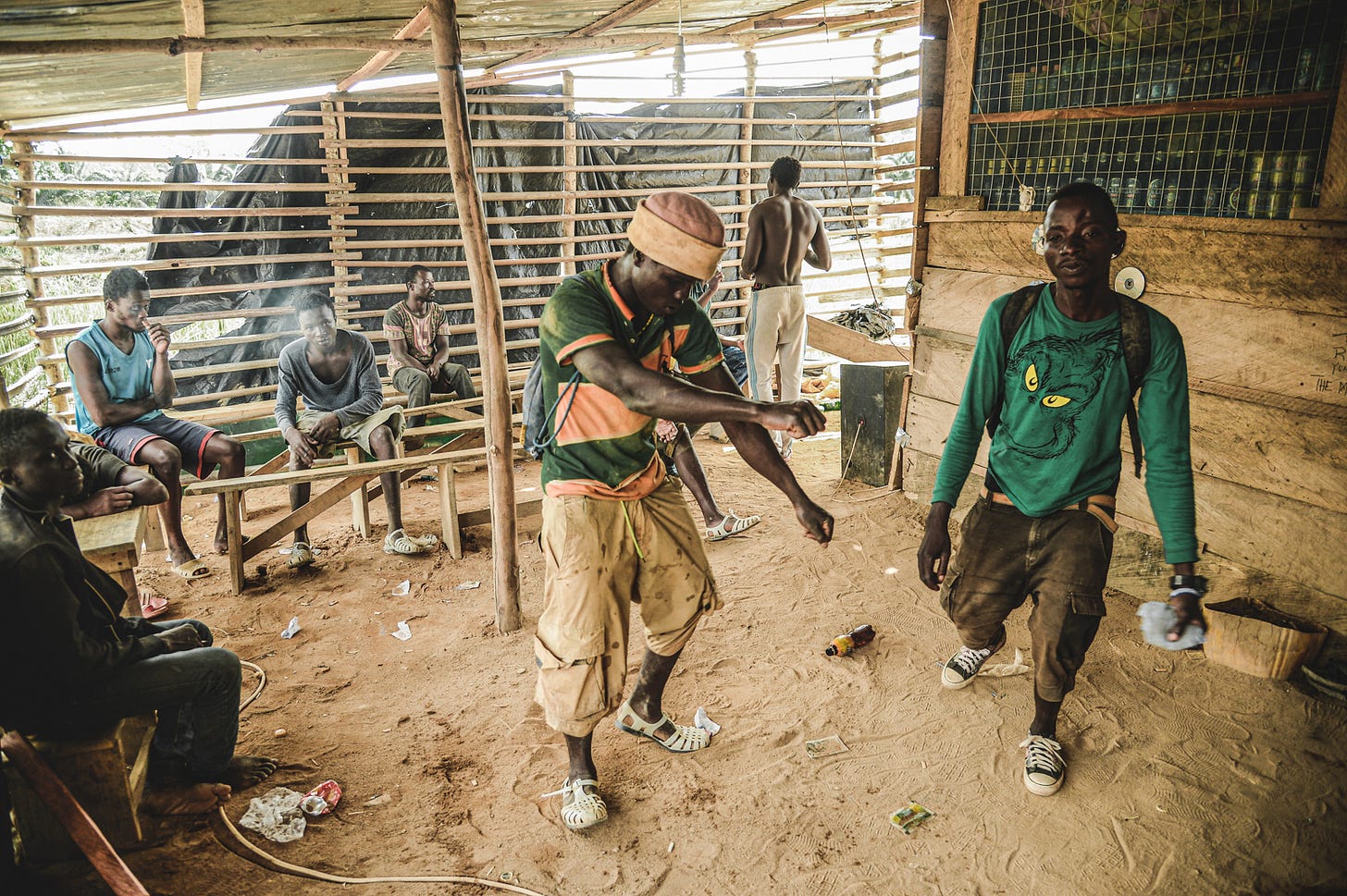If you find this story interesting please consider subscribing to receive a free story weekly.
Images by Denis Vejas | Instagram | Website
Obuasi, a community nestled in southern Ghana's Ashanti region, was once simple farmland flush with cocoa and palm nut plantations. Now, nearly 13 years after the region's gold rush, the landscape is littered with sprawling illegal mining pits known as galamsey (a local Ghanaian term loosely translated to "gather them and sell"). The mining process wreaks environmental havoc, leaking chemicals into surrounding land and waterways, contributing to soil erosion and deforestation, and severely impacting the productivity of local farmland. I visited a galamsey mine on the outskirts of Obuasi in 2017, documenting the impacts of the process on the environment, the miners, and the surrounding community.
Most of the galamsey mines are established on the edges of industrial gold mines. Driven by the commodity’s increasing price and cheap equipment from China, the region became a centre for formal and informal mining around 2008. Most of the early galamsey workers were farmers who, for various reasons including land degradation caused by the toxic mining waste, lost their agricultural work and started digging for gold instead. As the gold rush accelerated, more and more labourers from other regions and neighbouring countries were attracted to the sector, looking for easy earnings. About 30 per cent of Ghana’s gold is mined in the galamseys and big money is being made here, but for many, the earnings are anything but easy and come at a real cost to the environment and the surrounding community.
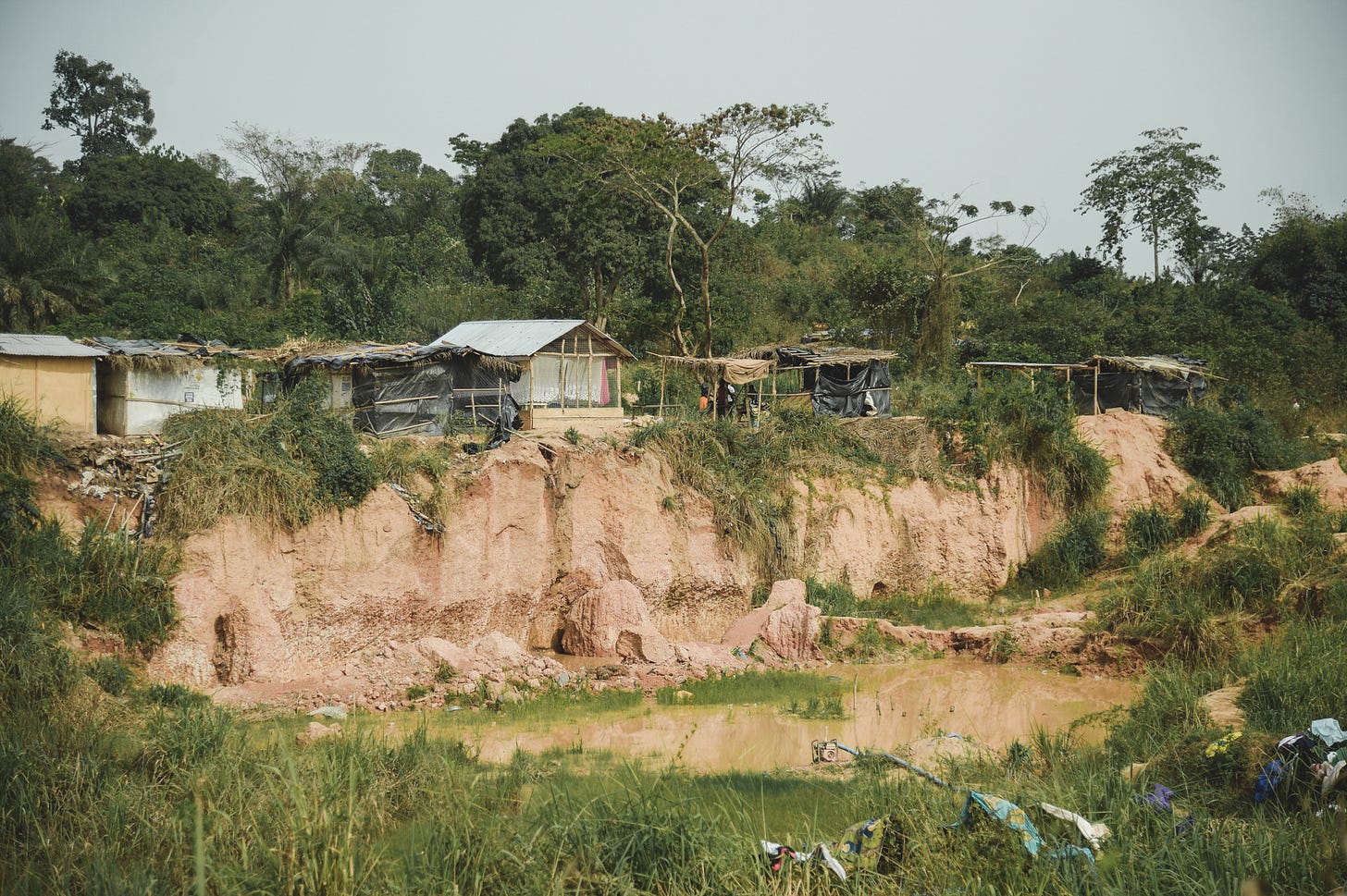


The Ghanaian government reserves jobs in official mines for specially educated people, but with an average day's salary of 6 US dollars (considerably higher than what most Ghanaians earn), people are finding ways to work in the gold industry regardless, even if it means enduring dangerous and gruelling conditions in the galamseys.

While the formal industrial operations in the region make use of enormous, land-mass-moving, environment-eating bits of machinery, galamsey mines rely largely on traditional tools like picks, shovels, and simple manpower for all but the final stages of the mining process. Once rocks are extracted from the mines or river bottoms they have to be shredded into tiny pieces and pressure-washed for any gold to reveal itself.



The mining process is toxic, with mercury and cyanide being key constituents of the process. Working with their hands, exposure to these chemicals can poison the galamsey miners, however, it’s not just those in direct contact with the chemicals that suffer because of them. Through wastewater, the chemicals seep into the rivers and groundwater and then into the locals’ bodies through drinking water or eating locally caught fish.
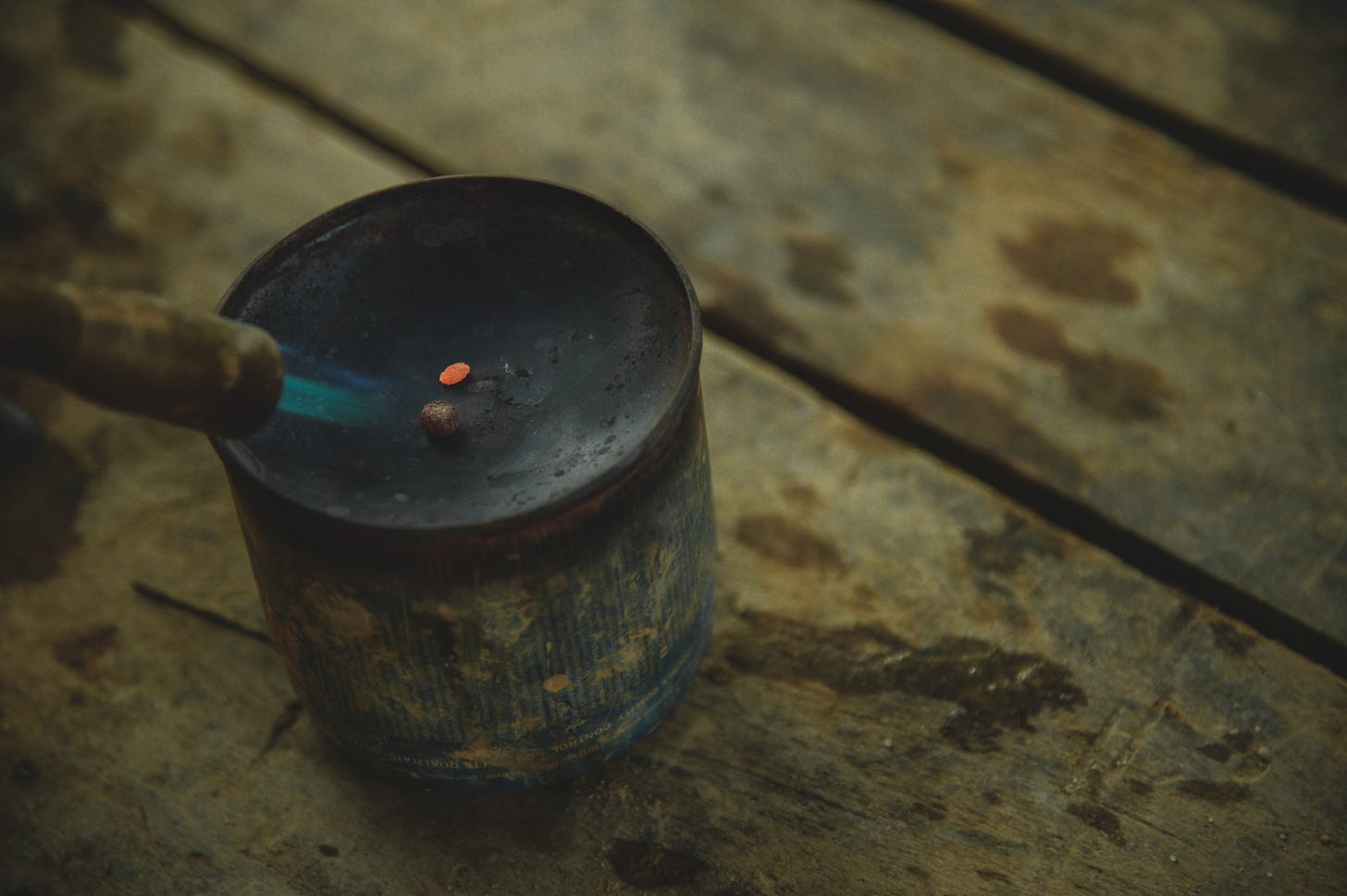
The equipment and chemical elements are provided by so-called sponsors (local and foreign business networks), in exchange for the right to buy freshly extracted gold at below-market price. Galamsey miners typically work in small groups of 6 to 15 people, with each individual responsible for a different part of the mining process. At the end of the day, after the gold has been sold to the buyer, the profit is divided among the group members.

The other name for galamsey, commonly used by the people working in the mines is “Ghetto.” I found this slang label to be fairly accurate in describing the atmosphere inside the temporary mine settlement. A lot of miners, especially the younger ones, are pursuing what they call a "high" or "thug" life, spending a large part of their earnings in a local bar on cheap gin, gambling, and weed.
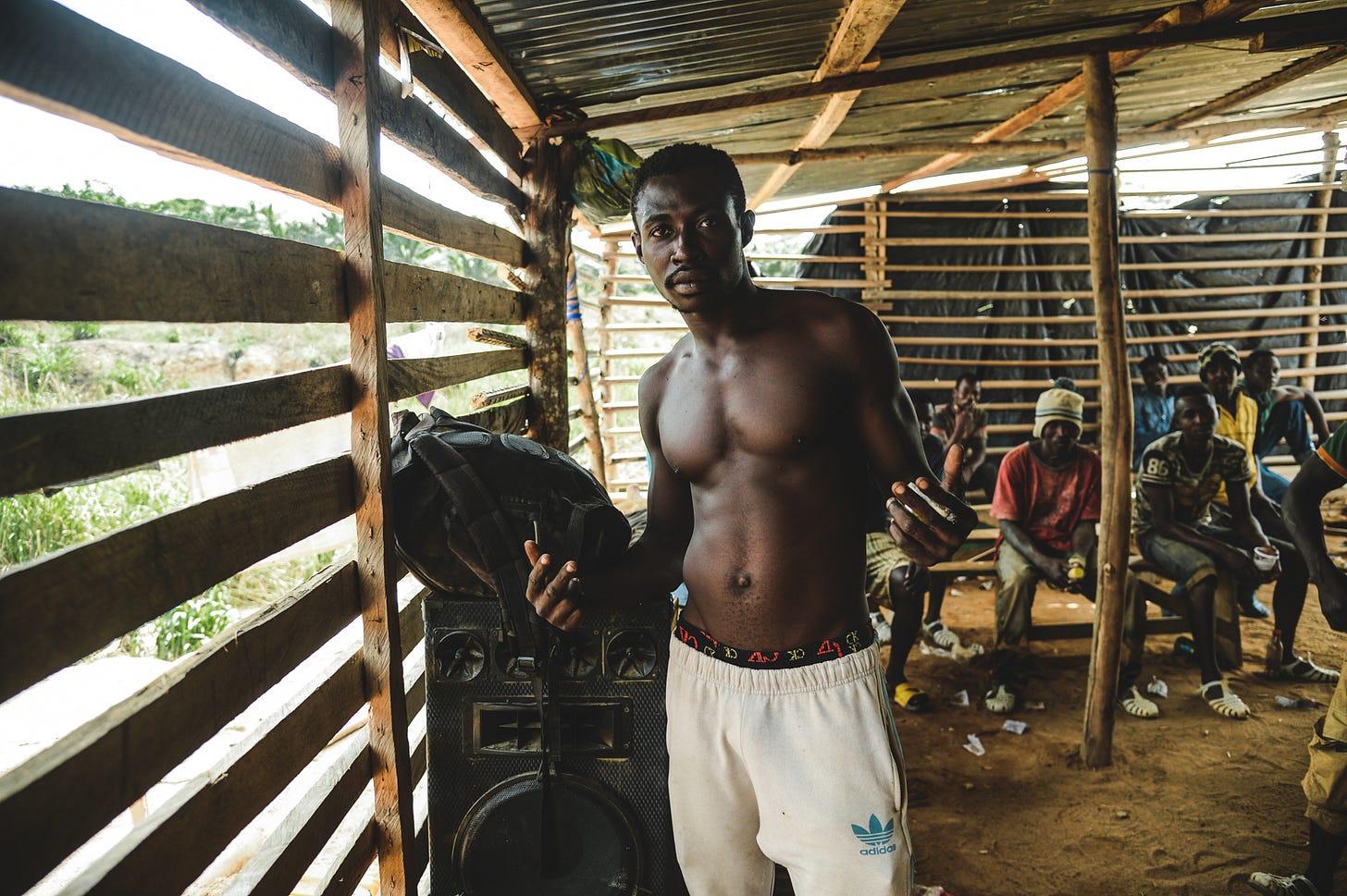


Despite being illegal, producing negative environmental impacts, being run with questionable labour practices and in some cases being a seat for criminality, the Ghanaian government has struggled to regulate the mines and bring them into compliance with the environmental and labour laws applied to official mines in the region. Given these mines produce a significant proportion of the gold coming out of Ghana, often for a cut price, it seems likely that those with interests in the mines will seek ways around future regulation in any case.
If you found this story interesting please consider subscribing for free to have a new story sent directly to you each week.
Also, if you know of someone else who might be interested, why not share it with them?



